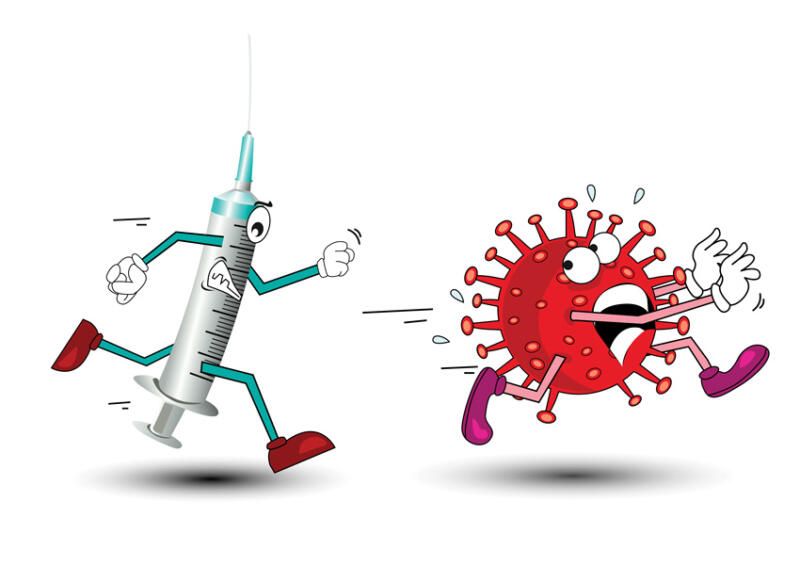Two Years and Multiple Variants Later in the COVID-19 Pandemic, Vaccines and Boosters are the Best Defense, Say CDC Doctors
Two years into the pandemic, subject matter experts – John T. Brooks, MD, Senior Science Advisor, CDC Emergency COVID-19 Response and Shannon Stokley, DrPH, Co-Lead, Vaccine Task Force, CDC Emergency COVID-19 Response – from the CDC presented updates on the status of the COVID-19 pandemic in both the United States and globally. What to expect from possible new variants; how and why vaccines remain the most important preventive measure for all age groups, were some of the topics discussed to reach more diverse audiences through ethnic news media.
The national ethnic media news briefing co-hosted by the Centers for Disease Control and Prevention and Ethnic Media Services was held March 25.

Response and Shannon Stokley, DrPH, Co-Lead, Vaccine Task Force, CDC Emergency
COVID-19 Response. (EMS)
Dr John T. Brooks began, “Walking through where we are with COVID-19 and with the U.S. focus, we’ve seen cases decrease dramatically after the past few weeks and our national numbers remain close to historic lows which is encouraging, however, in some areas we are now recording small increases even as cases continue to fall in others. We continue to monitor very closely these data from all of our incoming sources including wastewater surveillance cases and hospitalizations.
“CDC has been tracking the BA.2 sub-lineage of the Omicron variant carefully. The variant has been in the United States for the past two months and it has been slowly increasing in proportion to BA.1. We estimate that BA.2 represents 35 of circulating variants nationally as we’re learning from our colleagues in Europe, Asia and South Africa where BA.2 has resulted in varied peaks of cases. There is no evidence that the BA.2 variant results in more severe disease nor does it appear to be more likely to evade immune protection, however, it does have increased transmission in comparison to the related BA.1 Omicron variant that circulated in the U.S. this winter, peaking during January.
“The small increase in cases in the northeast is something that we are watching very closely as we look for any indication of an increase in severe disease from COVID-19 and track whether this might represent an increase in the strain that’s being put on hospitals, or the burden put on hospitals. We have not seen this so far, reassuringly, nationwide cases have steadily been decreasing since the Omicron BA.1 surge and while this is terrific news, we do expect that cases may continue to fluctuate including some increases in individual communities which is exactly why the COVID-19 community level metrics, we recently developed, have been put into place. One way that CDC and our public health partners collaborate is by monitoring potential increases in cases and transmission and doing this through the COVID-19 wastewater surveillance system currently, we are seeing a very modest uptick of sites reporting an increase of virus levels in wastewater in some communities.
“These are upticks that reflect very small increases from an already very low level so we have to be cautious in how we interpret these but sustained trends over time can give us an early indication of coven 19 infections in communities so we’re watching this warning signal and reacting and looking more deeply there are areas to watch carefully an example of the interplay of our data systems that we use to inform public health decisions if cases do go up we have the COVID community levels framework to implement additional layers of prevention strategies at the local level to swiftly protect individuals and communities and CDC will continue to use all of the tools in our toolbox to closely keep an eye on any increase in COVID-19 in communities including early indicators like wastewater surveillance, any upticks in cases and in hospitalizations and any changes in our genomic surveillance that monitors for circulating variants, if cases rise from the Omicron variant or for any other variant we have the tools, we have vaccines, we have testing, and we have therapeutics, and we are prepared to react,” said Dr Brooks.
Dr Shannon Stokley, next gave stats on the progress of vaccines. “We’ve made tremendous progress over the last year and a half. We’ve given more than 559 million doses of COVID-19 vaccines and that’s three times the amount of vaccine that’s usually given in a flu season so a majority of that has been with new vaccine technology the MRNA vaccines. These vaccines have been proven safe and effective at preventing complications from COVID-19, including severe disease hospitalization and death.
“About when children under 5 will be able to be vaccinated, many parents may be worried about ensuring their children are protected against COVID-19. Before COVID-19 vaccines are authorized for use in this younger age group they must go through a rigorous process to determine the safety and efficacy, just in keeping with all other recommended vaccines and what we’ve done all along the process for COVID-19 vaccines for other age groups, so currently there are multiple manufacturers that are conducting clinical trials to assess the safety and effectiveness of COVID-19 vaccine among children younger than five years of age, and once complete, those manufacturers must submit an application to the U.S. Food and Drug Administration, and then the FDA will then review the data and if there’s good evidence of safety and effectiveness, they will authorize the vaccine under emergency use for children in this age group.
“Following the FDA authorization, CDC’s Advisory Committee on Immunization Practices (ACIP) will meet to make a recommendation based on a thorough review of the available evidence. If the CDC director recommends a vaccine, it will become available for administration, and COVID-19 vaccines have undergone, and will continue to undergo, the most intensive safety monitoring in U.S. history. The COVID-19 vaccines are also undergoing the most comprehensive monitoring for vaccine effectiveness in U.S. history and this involves multiple ongoing studies to understand how well the vaccines are working in different groups of people, including children, and against different variants. Our goal is to get to a point where COVID-19 is no longer disrupting our daily lives.
“Vaccination and our proven prevention measures like the COVID-19 community level recommendations are how we’re going to reach this point. We are in a much stronger position than we were two years ago with the tools we need, including vaccines and boosters, that are protecting people from hospitalization and death.
“If you are boosted, you are 21 times less likely to die from COVID-19. Vaccination remains the most effective and safest way to prevent COVID-19 and I encourage everyone to remain up to date on their COVID-19 vaccinations,” concluded Dr Stokley.


